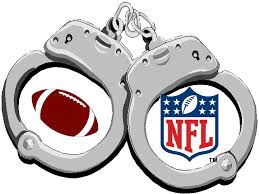 The 2013 NFL season is officially underway, and week one of America’s most popular sport is now in the books. Over one million people attended an NFL game in week one, and tens of millions more watched on television. The sport has never been more popular, and with the concussion lawsuit being resolved, the sport has never been in a better financial position. But the stain of a tumultuous offseason remains; as over thirty active players were arrested from the end of the Baltimore Ravens’ Super Bowl win until the start of this season. Players from 19 different teams were either booked on criminal charges or taken into custody on outstanding bench or arrest warrants. The charges ranged in severity from simple possession of drugs all the way up to murder. Despite the league’s growth in popularity and prosperity, player arrests are an issue that the commissioner’s office will continue to battle in the coming years.
The 2013 NFL season is officially underway, and week one of America’s most popular sport is now in the books. Over one million people attended an NFL game in week one, and tens of millions more watched on television. The sport has never been more popular, and with the concussion lawsuit being resolved, the sport has never been in a better financial position. But the stain of a tumultuous offseason remains; as over thirty active players were arrested from the end of the Baltimore Ravens’ Super Bowl win until the start of this season. Players from 19 different teams were either booked on criminal charges or taken into custody on outstanding bench or arrest warrants. The charges ranged in severity from simple possession of drugs all the way up to murder. Despite the league’s growth in popularity and prosperity, player arrests are an issue that the commissioner’s office will continue to battle in the coming years.
Continue reading →
Feds Shift Stance On Marijuana
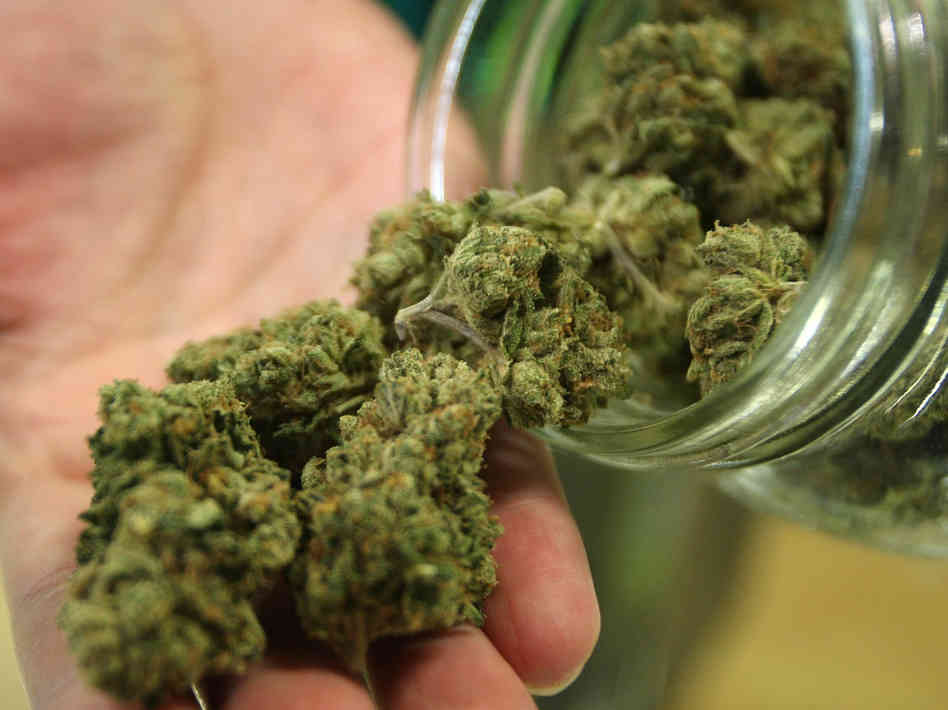 We recently posted an article about a notable medical personality and University of Michigan grad Dr. Sanjay Gupta shifting his stance on marijuana. Although the influential celebrity doc came out with strong public support for legalizing medical marijuana, his revised stance will have little direct affect on state and federal laws. But just last week a politician, whose stance on the topic will affect state and federal pot policy, voiced a similar change of heart. Attorney General Eric Holder informed the governors of Colorado and Washington that the Department of Justice will not seek to override their state’s new marijuana decriminalization laws. The Fed’s top prosecutor and his staff also issued a memo to each of the assistant United States attorneys, which clearly spells out the revised guidelines for handling marijuana cases on the federal level. The memo describes eight points of emphasis, and not surprisingly simple possession didn’t make the cut.
We recently posted an article about a notable medical personality and University of Michigan grad Dr. Sanjay Gupta shifting his stance on marijuana. Although the influential celebrity doc came out with strong public support for legalizing medical marijuana, his revised stance will have little direct affect on state and federal laws. But just last week a politician, whose stance on the topic will affect state and federal pot policy, voiced a similar change of heart. Attorney General Eric Holder informed the governors of Colorado and Washington that the Department of Justice will not seek to override their state’s new marijuana decriminalization laws. The Fed’s top prosecutor and his staff also issued a memo to each of the assistant United States attorneys, which clearly spells out the revised guidelines for handling marijuana cases on the federal level. The memo describes eight points of emphasis, and not surprisingly simple possession didn’t make the cut.
Continue reading →
State Rep Arrested For Second Alcohol Offense
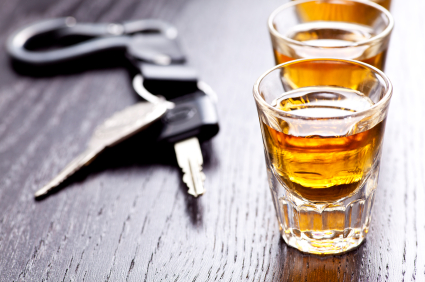 Back in May we posted an article about two politicians, a state lawmaker and a Baltimore County Councilman, who ran into legal troubles as a result of alcohol related incidents. Both were subsequently convicted of DUI in District Court. It seems that national politicians make news headlines each week for some sort of criminal or scandalous behavior, and state and local politicians are by no means without their share of mishaps. These two incidents are the proof, and as a result we are no longer surprised to read the stories in local news outlets and police blotters. But in the case of delegate Donald Dwyer, you can’t help but be shocked by this most recent arrest. The delegate’s second arrest in the past year is a political catastrophe no doubt, but the implications of this incident extent far beyond politics.
Back in May we posted an article about two politicians, a state lawmaker and a Baltimore County Councilman, who ran into legal troubles as a result of alcohol related incidents. Both were subsequently convicted of DUI in District Court. It seems that national politicians make news headlines each week for some sort of criminal or scandalous behavior, and state and local politicians are by no means without their share of mishaps. These two incidents are the proof, and as a result we are no longer surprised to read the stories in local news outlets and police blotters. But in the case of delegate Donald Dwyer, you can’t help but be shocked by this most recent arrest. The delegate’s second arrest in the past year is a political catastrophe no doubt, but the implications of this incident extent far beyond politics.
Just 8 months ago, in December of 2012, the delegate was arrested and charged with operating a vessel while under the influence of alcohol after he crashed his boat on an Anne Arundel County river. Numerous people, including children, were injured as a result of this boat accident, after which the delegate admitted to drinking at least 8 beers. He subsequently pled guilty to this offense and was sentenced to probation and 30 days in the county jail. But he was able to avoid serving that sentence after his defense attorney filed a de novo appeal to the Circuit Court. Under Maryland law, a criminal defendant has an absolute right to appeal a District Court criminal judgment, and upon filing the appeal the case basically starts over from scratch in the Circuit Court. In this particular case the delegate did not have to immediately serve his jail sentence because he was given an appeal bond, which is commonly granted to first time offenders. On August 6th Dwyer once again pled guilty to the alcohol charge and was given a sentencing date of October 25th of this year. Sentencing was set off to allow him to continue alcohol abuse treatment and education, the progress reports of which would be used as mitigation at the sentencing hearing. This is a common practice in DUI cases in order to obtain a probation before judgment or PBJ, and in more serious cases a suspended jail sentence.
Rather than take advantage of the delayed sentencing date to build a resume of mitigation, the delegate did just the opposite. Two weeks after pleading guilty Dwyer was again arrested for DUI and a host of other traffic infractions such as negligent driving, this time on the roadway and not the waterway. Nobody was injured and there was no accident, but that should matter little to the delegate’s colleagues, the public, and the judge. Fellow state lawmakers have already been outspoken about Dwyer’s behavior and public backlash is imminent. But for now the delegate has bigger problems to deal with. The assistant state’s attorney has already filed a motion to revoke Dwyer’s appeal bond, which will be heard next week. If the judge revokes the bond Dwyer will be remanded to the jail pending the outcome of his case later this fall. And the judge will undoubtedly take this recent arrest into account when making a sentencing decision. The blog will update with an article as new developments occur, but it is likely that the delegate will be in jail or at the very least in inpatient alcohol treatment for the next two months before he is sentenced.
High Profile Doctor Reverses Stance On Medical Marijuana
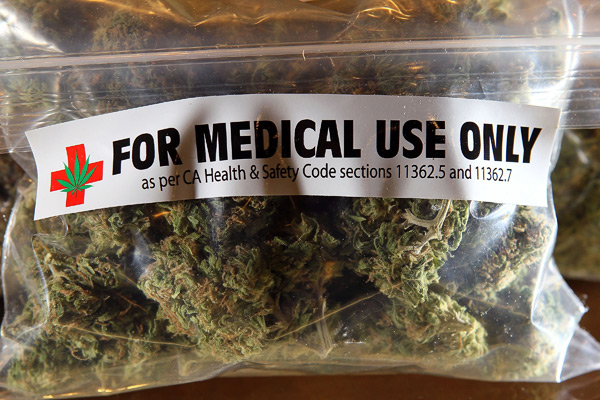 Around this time last year there was much talk about marijuana legislation in Maryland. The possession of less than 10 grams law was about to go into effect, and state lawmakers were preparing proposals for pot decriminalization. The talk is quieter this year though, despite the fact that the state’s medical marijuana law is set to go into effect in October. The reason for the lack of buzz is likely due to the fact that the medical use program will not actually begin functioning until 2016. The law becoming effective will do little to help patients who want the drug now. But, a recent stance reversal by a prominent medical expert has the topic in the news this week. CNN’s chief medical correspondent, Dr. Sanjay Gupta, has reversed his public stance to now favor the implementation of legal medical marijuana programs throughout the country. A graduate of the University of Michigan, Dr. Gupta is currently working on a documentary entitled “Weed”, and has traveled the world to meet with the foremost experts on the subject.
Around this time last year there was much talk about marijuana legislation in Maryland. The possession of less than 10 grams law was about to go into effect, and state lawmakers were preparing proposals for pot decriminalization. The talk is quieter this year though, despite the fact that the state’s medical marijuana law is set to go into effect in October. The reason for the lack of buzz is likely due to the fact that the medical use program will not actually begin functioning until 2016. The law becoming effective will do little to help patients who want the drug now. But, a recent stance reversal by a prominent medical expert has the topic in the news this week. CNN’s chief medical correspondent, Dr. Sanjay Gupta, has reversed his public stance to now favor the implementation of legal medical marijuana programs throughout the country. A graduate of the University of Michigan, Dr. Gupta is currently working on a documentary entitled “Weed”, and has traveled the world to meet with the foremost experts on the subject.
Continue reading →
Corrections Officer Pleads Guilty To Racketeering
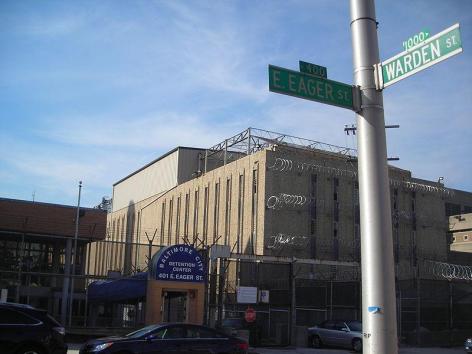 The first of 13 female corrections officers indicted on numerous federal charges earlier this spring has pleaded guilty to racketeering. The indictments came after a lengthy investigation by state and federal law enforcement into the highly profitable drug and contraband smuggling operations that were running rampant in the Baltimore County Detention Center. The indictments, which made national headlines a few months ago, alleged that corrections officers and inmates, particularly inmates of a notorious street gang, conspired to introduce various drugs such as oxycodone, suboxone, and marijuana into the jail population. After the contraband was smuggled through security, the gang members would sell it to other inmates. The gang members and their associates would also sell tobacco, cellphones, and other drugs such as cocaine and heroin. This particular corrections officer, a 31 year old from Randallstown in Baltimore County, was also accused of aiding in moving the contraband throughout the jail facility. She was originally indicted on charges of racketeering, drug trafficking, and money laundering, but federal prosecutors dropped all but the racketeering charge as part of a plea deal.
The first of 13 female corrections officers indicted on numerous federal charges earlier this spring has pleaded guilty to racketeering. The indictments came after a lengthy investigation by state and federal law enforcement into the highly profitable drug and contraband smuggling operations that were running rampant in the Baltimore County Detention Center. The indictments, which made national headlines a few months ago, alleged that corrections officers and inmates, particularly inmates of a notorious street gang, conspired to introduce various drugs such as oxycodone, suboxone, and marijuana into the jail population. After the contraband was smuggled through security, the gang members would sell it to other inmates. The gang members and their associates would also sell tobacco, cellphones, and other drugs such as cocaine and heroin. This particular corrections officer, a 31 year old from Randallstown in Baltimore County, was also accused of aiding in moving the contraband throughout the jail facility. She was originally indicted on charges of racketeering, drug trafficking, and money laundering, but federal prosecutors dropped all but the racketeering charge as part of a plea deal.
Continue reading →
Police Arrest Two Suspects In Snowball Stand Break-In
Howard County Police have arrested two suspects in a pair of recent burglary at a local snowball stand. The two young men were charged for two incidents occurring during the last week of July. One on the 26th, and the other just four days later when the frozen treat shack was ransacked again. Police were assisted in the investigation by surveillance from the snowball stand and also a convenience store in close proximity to a hardware store where the stand is located. The footage showed that on 30th two males used bolt cutters to cut open a padlock on the front window of the stand and kicked in the door to gain access. While inside the two burglars tore the place apart looking for anything of value, and came away with cash from two of the registers. The exterior spotlight on the property was also missing. Footage from the convenience store on July 26th showed what police later identified as the same two suspects prying open a door to the shop at around midnight. On this night the burglars attempted to steal a safe but were unsuccessful, which no doubt motivated the duo to return.
Continue reading →
Medical Marijuana Dispensaries Open In D.C.
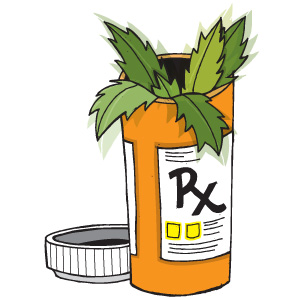 There was no celebratory grand opening, no balloons or customers lining up on the sidewalk. But there were also no police officers waiting to make arrests as customers walked out of Washington’s first operational medical marijuana dispensary with product in hand. Fifteen years after D.C. passed a referendum by an overwhelming majority to legalize pot for medical use, the program is finally off and running. Capital Care, first dispensary to participate in the program, is located just a mile from the United States Capital building where federal lawmakers spent the last decade and a half attempting to block this day from becoming a reality. The dispensary is also located steps away from the ATF headquarters, and other federal law enforcement agencies that are still empowered by federal laws, which have no mention of legalized pot for any purpose. Thus D.C. has become the latest jurisdiction to step into the common dilemma of local versus federal law with respect to marijuana legalization.
There was no celebratory grand opening, no balloons or customers lining up on the sidewalk. But there were also no police officers waiting to make arrests as customers walked out of Washington’s first operational medical marijuana dispensary with product in hand. Fifteen years after D.C. passed a referendum by an overwhelming majority to legalize pot for medical use, the program is finally off and running. Capital Care, first dispensary to participate in the program, is located just a mile from the United States Capital building where federal lawmakers spent the last decade and a half attempting to block this day from becoming a reality. The dispensary is also located steps away from the ATF headquarters, and other federal law enforcement agencies that are still empowered by federal laws, which have no mention of legalized pot for any purpose. Thus D.C. has become the latest jurisdiction to step into the common dilemma of local versus federal law with respect to marijuana legalization.
Continue reading →
Baltimore Cop Suspended For Abuse
 The Baltimore City Police Department has announced that one of their own has been suspended with pay and is currently under investigation for excessive use of force during an arrest. The incident began when a 14-year-old boy was spotted driving a stolen car. Officers of the city police force’s auto theft unit got wind of the whereabouts of the stolen vehicle being operated by the unlicensed driver and began their pursuit. Just minutes into the chase the inexperienced driver lost control of the car and went head on into a concrete curb, which briefly sent the vehicle airborne. The car then crashed into another parked vehicle in a commercial lot and came to its final stop. Seconds later multiple police cars arrived on scene, and with guns drawn pulled the juvenile out of the heavily damaged vehicle. As the boy was pulled out of the vehicle and surrounded by close to ten police officers, another officer ran up and appeared to strike the boy after he had been detained. Seconds later the same officer appeared to stand over and strike the boy once again. The only reason that this information has come to light is the fact that the entire incident was caught on video by a news helicopter. The helicopter began following the stolen car before it ran a curb and went crashing into a vehicle. The helicopter then stopped overhead and zoomed in on the boy being pulled out of the car.
The Baltimore City Police Department has announced that one of their own has been suspended with pay and is currently under investigation for excessive use of force during an arrest. The incident began when a 14-year-old boy was spotted driving a stolen car. Officers of the city police force’s auto theft unit got wind of the whereabouts of the stolen vehicle being operated by the unlicensed driver and began their pursuit. Just minutes into the chase the inexperienced driver lost control of the car and went head on into a concrete curb, which briefly sent the vehicle airborne. The car then crashed into another parked vehicle in a commercial lot and came to its final stop. Seconds later multiple police cars arrived on scene, and with guns drawn pulled the juvenile out of the heavily damaged vehicle. As the boy was pulled out of the vehicle and surrounded by close to ten police officers, another officer ran up and appeared to strike the boy after he had been detained. Seconds later the same officer appeared to stand over and strike the boy once again. The only reason that this information has come to light is the fact that the entire incident was caught on video by a news helicopter. The helicopter began following the stolen car before it ran a curb and went crashing into a vehicle. The helicopter then stopped overhead and zoomed in on the boy being pulled out of the car.
Continue reading →
Maryland Bars Still Not Liable For DUI Incidents
 The state’s highest court recently ruled on a lawsuit involving dram shop laws, an issue that has been hotly debated for the last few decades. In essence, dram shop laws refer to the liability of bars and restaurants for the actions of their patrons. A state with dram shop laws provides a third party with a legal right to sue a bar or restaurant, which has continued to serve a patron that is visibly drunk, if the patron causes some sort of injury to the third party. Dram shop is simply a traditional term for any establishment that sells alcohol. These laws typically apply to DUI accidents involving serious injury or death. Currently there are 43 states with some sort of dram shop statute, but both the Maryland Legislature and the Courts have not been inclined to follow the majority on this issue, with neighboring Virginia and Delaware sharing the same view. Numerous bills have been proposed over the years, but none has ended up on the governor’s desk for a signature, and the state’s highest court has never upheld a civil action against a bar or tavern for an act of a patron that occurred outside the establishment.
The state’s highest court recently ruled on a lawsuit involving dram shop laws, an issue that has been hotly debated for the last few decades. In essence, dram shop laws refer to the liability of bars and restaurants for the actions of their patrons. A state with dram shop laws provides a third party with a legal right to sue a bar or restaurant, which has continued to serve a patron that is visibly drunk, if the patron causes some sort of injury to the third party. Dram shop is simply a traditional term for any establishment that sells alcohol. These laws typically apply to DUI accidents involving serious injury or death. Currently there are 43 states with some sort of dram shop statute, but both the Maryland Legislature and the Courts have not been inclined to follow the majority on this issue, with neighboring Virginia and Delaware sharing the same view. Numerous bills have been proposed over the years, but none has ended up on the governor’s desk for a signature, and the state’s highest court has never upheld a civil action against a bar or tavern for an act of a patron that occurred outside the establishment.
Continue reading →
Drug Overdoses On The Rise In Maryland
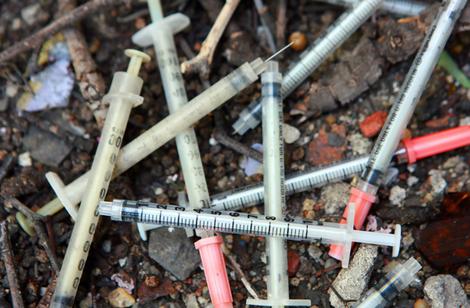 A recent report released by the State Department of Health has brought disturbing news regarding drug use in Maryland. According to the department, drug overdoses increased a considerable 15 percent from 2011 to 2012. The likely culprit for the increase in drug fatalities is the popularity and resulting pervasiveness of heroin in all areas of the state, from downtown Baltimore to the suburbs. We have blogged and posted web pages about the comeback of heroin, and these statistics simply offer more proof that the drug is enjoying a second coming, albeit a deadly one. In 2011 the state reported 245 heroin related deaths, but last year this number ballooned to 378, while the total alcohol and drug related deaths rose from 663 to 761 from 2011 to 2012. Prince George’s County and Baltimore City were responsible for the jump, as most other areas of the state reported a similar number of drug fatalities in the last two years.
A recent report released by the State Department of Health has brought disturbing news regarding drug use in Maryland. According to the department, drug overdoses increased a considerable 15 percent from 2011 to 2012. The likely culprit for the increase in drug fatalities is the popularity and resulting pervasiveness of heroin in all areas of the state, from downtown Baltimore to the suburbs. We have blogged and posted web pages about the comeback of heroin, and these statistics simply offer more proof that the drug is enjoying a second coming, albeit a deadly one. In 2011 the state reported 245 heroin related deaths, but last year this number ballooned to 378, while the total alcohol and drug related deaths rose from 663 to 761 from 2011 to 2012. Prince George’s County and Baltimore City were responsible for the jump, as most other areas of the state reported a similar number of drug fatalities in the last two years.
Continue reading →
 Criminal Defense Lawyer Blog
Criminal Defense Lawyer Blog

